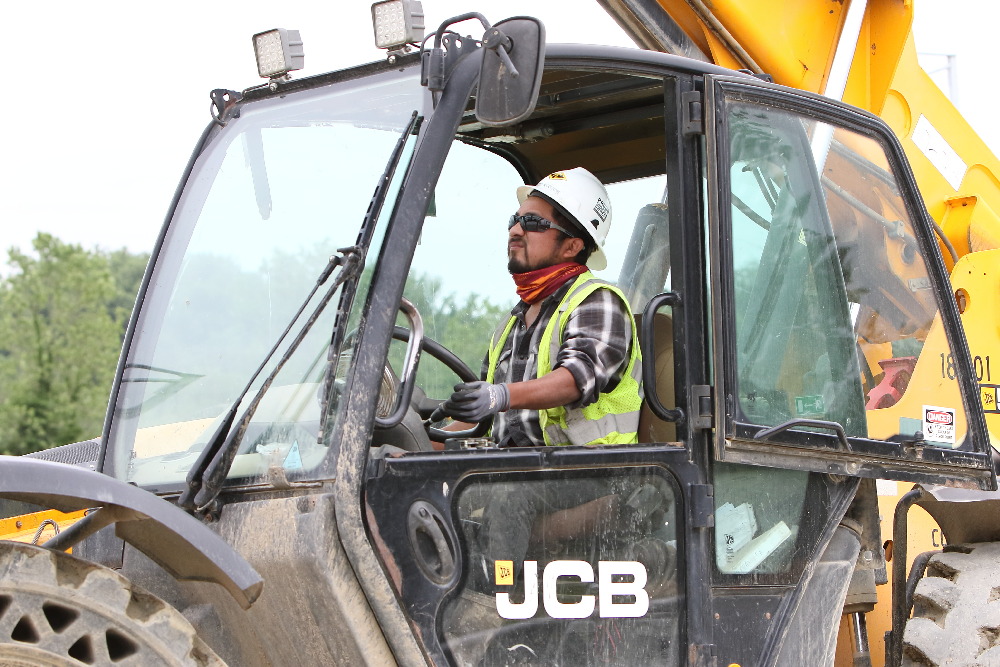
Top 4 ways to mitigate accidents when using earth-moving equipment
By Taylor Klitzke
Perhaps Carole King didn’t have mobile earth-moving equipment in mind when she wrote that song, but construction superintendents should. Because it could be a matter of life or death.
As new workers prepare to begin on jobsites, construction managers and general contractors must provide a comprehensive orientation to mitigate accidents. To reduce the risk of injuries — and possibly fatalities — training should educate workers on safety protocols, equipment operation and hazard recognition, as well as all federal, state and local regulations. Proper earth-moving equipment training ensures workers understand their roles and responsibilities, and the importance of adhering to safety guidelines.
To be successful, the program must embody a commitment toward accident prevention and should require cooperation in all safety and health matters from every person on the jobsite. Our team uses a comprehensive, mandatory training program developed by OSHA that is thorough and essential.
OSHA’s ‘Construction Focus Four Training’
As part of its “Construction Focus Four Training,” OSHA’s classroom instruction and lesson plans address the top four causes of injuries and fatalities in construction. Two of the four major hazards outlined in the training are “Caught-in or -Between” and “Struck by” — dangers that can involve earth-moving equipment.
The purpose of the lessons — part of the OSHA Training Institute Construction Outreach course — is to provide workers with information that will enable them to recognize these hazards at the worksite, learn the common types of hazards and how they can protect themselves. As importantly, the training identifies what general contractors and construction managers are required to do to protect workers from the hazards.
Instructors engage the workers in a variety of examples of hazards that range from the obvious to an unimagined, one-of-a-kind accident. These “what-if’s,” which can include photos of workers caught in machinery, buried in or by, crushed by and pinned down are discussed in small groups or teams. Each group analyzes the scenarios and provides recommendations for the prevention.
Safety checklist
While the comprehensive safety model features in-depth prevention measures, the following are a few essential steps everyone on the jobsite must understand and practice.
Many construction projects begin with trenching and excavation. Initial safety steps should include the following:
- Inspecting all excavations daily and after a rain occurrence and calling utilities 48 hours before digging begins.
- Soils must be sloped per soil classification and spoil piles must be set back a minimum of 2 feet from the edge of all trenches and excavations; when the depth is 4 feet or greater, a safe means of egress should be established within 25 feet.
- Earth moving equipment includes bulldozers, motor graders, scrapers, loaders, skid steer loaders, compactors, backhoes, end dumps, side dumps, dump trucks and more and must comply with 1926.602(a)(9)(ii) for back-up alarms or signal persons. If the equipment is operated during low light or darkness, machinery must be equipped with at least two headlights facing forward and adequate lights in reverse unless other lighting is used.
- Equipment must always maintain a proper distance of a minimum of 50 feet and utilize a visual, voice or hand signal to the operator to approach. The operator must put the transmission in neutral, set the parking brake and let the approaching worker know when it is safe and when it is not, as there may be blind spots on the equipment.
- Operators must make routine inspections of the equipment and work areas, including overhead and underground utilities, utilizing safe operating procedures. In addition, all workers on the ground near earth-moving equipment must wear high-visibility or Class 2 or greater garments.
- All crane operators, signalers and riggers must submit current training certifications to the construction manager. A detailed pick plan — scale drawing showing the crane, load and any nearby structures that could cause interference problems — must also be submitted.
- The general contractor, construction manager or earth-moving contractor must coordinate joint contractor-employee safety awareness meetings onsite. A documentation of the meetings shall be retained.
Finally, in addition to OSHA’s classroom instruction, workers should review jobsite orientation videos to become familiar with all characteristics of the jobsite. All workers then sign an acknowledgement form and are issued a related hardhat decal to be worn when onsite — just another step to ensure everyone understands the risks and protocols on the site.
It is our responsibility as superintendents, project managers, safety professionals and leaders on our jobsites to coach our workers to recognize these hazards and to eliminate them before they can potentially become fatal. To prevent injuries and save lives, all of us must work together.
Taylor Klitzke, SMS, CHST, is safety coordinator with Kraus-Anderson Construction and can be reached at taylor.klitzke@krausanderson.com.
Image courtesy of Associated General Contractors of America


 Join our thriving community of 70,000+ superintendents and trade professionals on LinkedIn!
Join our thriving community of 70,000+ superintendents and trade professionals on LinkedIn! Search our job board for your next opportunity, or post an opening within your company.
Search our job board for your next opportunity, or post an opening within your company. Subscribe to our monthly
Construction Superintendent eNewsletter and stay current.
Subscribe to our monthly
Construction Superintendent eNewsletter and stay current.